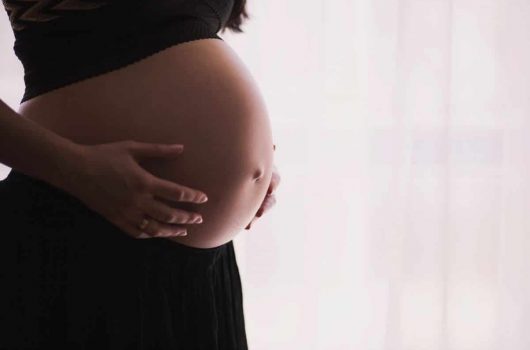During the initial stages of your pregnancy and when you start to show, your belly will be relatively high up in your torso. This helps you to move around with relative ease while you’re pregnant. However, toward the end of your pregnancy, you’ll notice a sudden drop in your belly. Where you had little space between your belly and breasts beforehand, there is now more. This phenomenon is called the baby drop.
What does baby drop mean?
The baby drop happens when your baby’s head descends to the pelvis and becomes engaged in the pubic bone. It is a sign that your baby is preparing for labor and birth. The baby is preparing for its descent through the birth canal and making its entrance into the world. The correct term for the baby drop is lightening. Lightening is a sign of impending labor.
When will it happen?
The baby drop will occur during the latter stages of your pregnancy. However, there is no hard and fast rule about exactly when it will happen. Some babies will ‘assume the position’ weeks ahead of labor. Others will only drop a few hours before labor begins. There are mothers who report feeling the baby drop only when they went into labor.
How will I know it’s happened?
You might not feel the sensation of the baby dropping. That is normal. But here are some signs to look out for as indicators that it has happened:
- Breathing is easier
Now that the weight of the baby has shifted downward toward the pelvis, your baby is no longer pressing on your diaphragm. This makes breathing much easier as your diaphragm can move unrestricted. - Some pressure in the pelvis
The relief of the pressure around your diaphragm will bring about the onset of pressure in the pelvic area. Walking around becomes more difficult. It’s at this point that most women start using the pregnancy penguin waddle to get around. - Discharge will appear
The pressure of the baby’s head bearing down on the pelvis causes the thinning out of the cervix. This is a requirement for labor to begin. When the cervix thins, it disposes of a mucus plug that blocked it. During this process, you’ll see increased vaginal discharge. - You need to use the bathroom more often
The baby’s descent to the lower half of your torso means that your bladder is put under pressure. Your baby is still growing, and it pushes against your bladder. It might feel like your baby is using your bladder as a personal trampoline. The sensation of pressure on the bladder will make you want to urinate more frequently. - Twinges of pain in the pelvis
You might feel an odd, slightly painful sensation in your pelvis. The ligaments are stretching while your baby makes themselves comfortable. If you find the pain is constant and agonizing, it may not be to do with your baby dropping. In this case, it’s wisest to consult a doctor immediately.
How to know the baby has dropped ‘correctly’
A breech birth means the baby engaged in the pelvis feet first. This is potentially dangerous to mother and child. Your doctor should be able to ascertain if the baby is in the right position during one of your final scans.
There are two positions your baby can assume head-down in the pelvis:
- Anterior: the baby is head down with its back facing your belly. This position is associated with the belly button popping out. Most movement sensations will be felt underneath your ribs as that’s where your baby is kicking.
- Posterior: the baby is head down with its back facing your back. In this position, you’ll feel your baby’s kicks in your tummy.
Don’t fear if your baby has engaged in a breech position. Babies can still move around, and in most cases, they find their way into the head-first position. If your midwife detects a breech position, she’ll confirm it with a scan. If she feels it necessary, she and your doctor will suggest natural ways of turning your baby. One of these is external cephalic version (ECV). This is performed by a doctor. Careful manipulation of your bump is done to turn your baby around.
